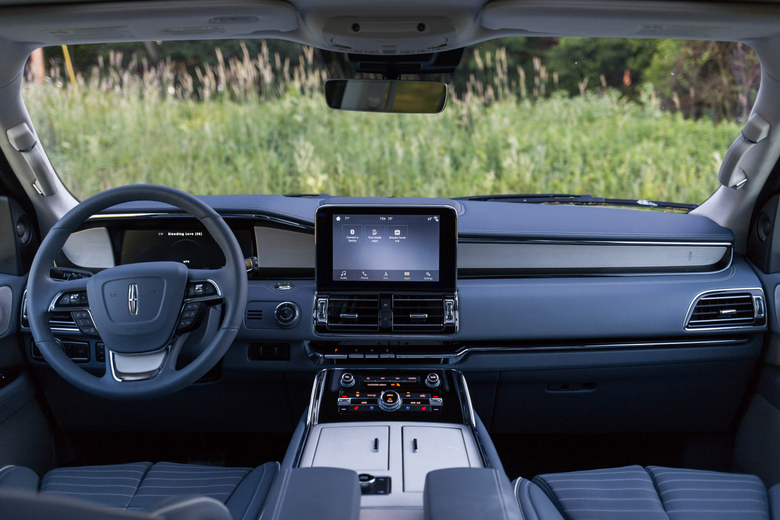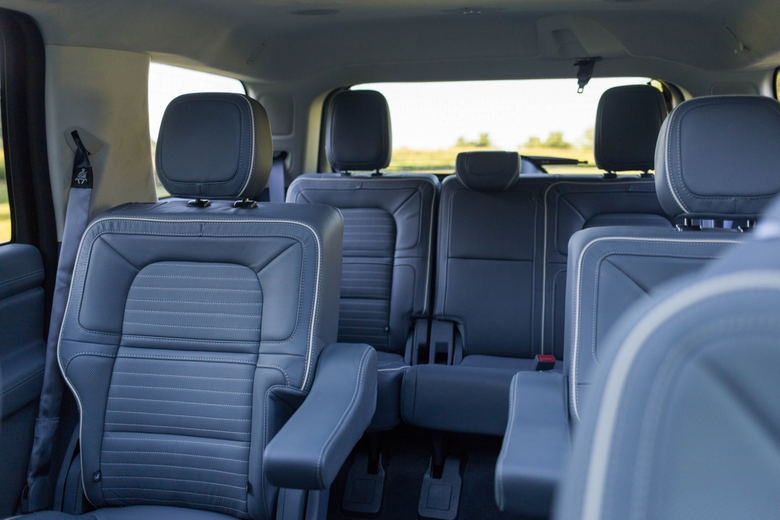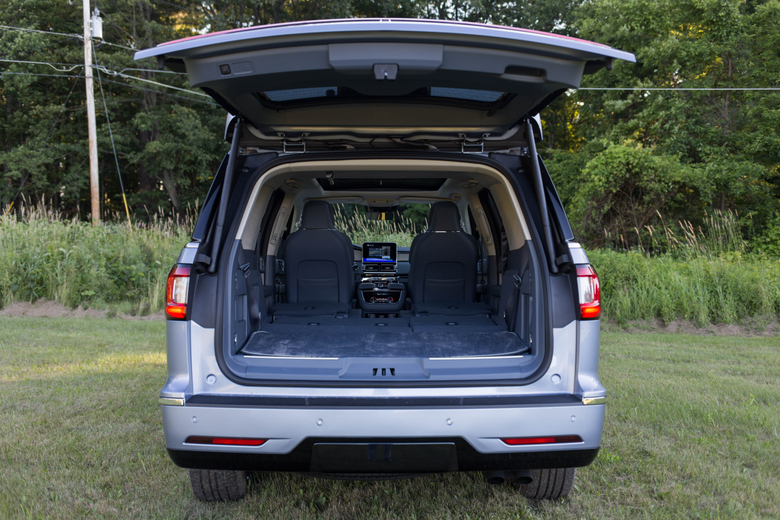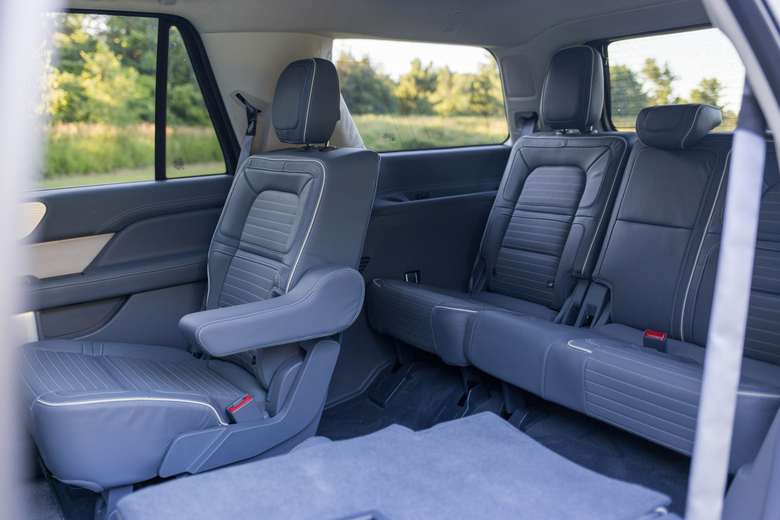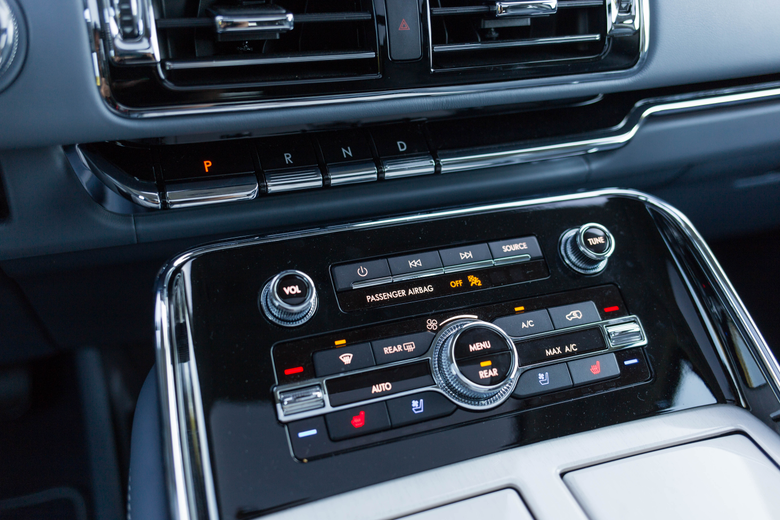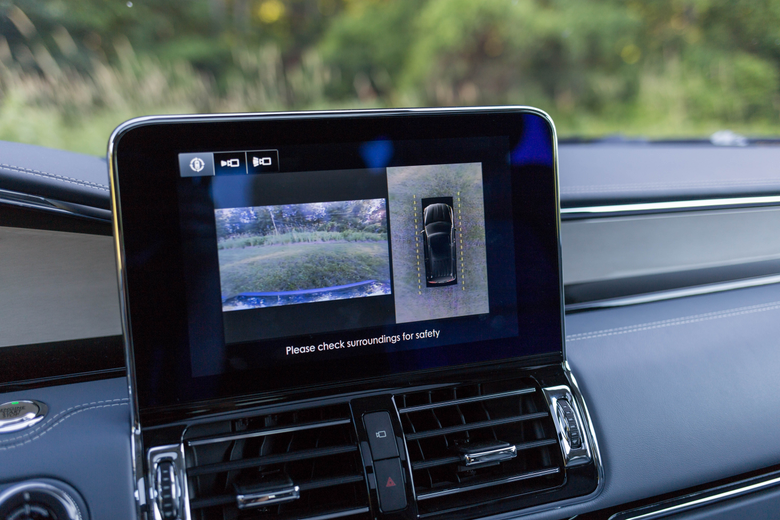The 2019 Lincoln Navigator Is A Glorious Return To American Opulence
We never had kings or queens here in America. (Well, we did before we were our own country, but we showed those fools what we really thought of them.) If we did, though, they'd all be driving 2019 Lincoln Navigators. The car is flush with splendor, rich with opulence and brings back the lavishness that was sorely lacking from American luxury for too long. It is, simply, a beast of a car.
I know I've just gotten done talking about how huge the 2019 BMW X7 was. But—if this is even possible at all—the Navigator I got into soon after felt like it dwarfed the BMW. In every way.
What's huger than huge? This Lincoln, apparently.
(Full Disclosure: I very badly wanted to try out a Navigator so I asked Lincoln if I could borrow one. A company rep dropped one off at my apartment for me, along with a full tank of gas.)
There's something to be said of merely being big. Because there's being big and powerful, which is what the Navigator is. No longer are you just taking up space, you're now a force of nature.
What is it?
First launched in the late 1990s, the Navigator is now in its fourth generation. It's the biggest car Lincoln offers, built on the Ford Expedition platform. As Lincoln's flagship model, it has three rows of seats for seven or eight passengers, depending on whether you opt for the captain's chairs or the bench seat for the second row.
Its stature is tall and wide, and you'll almost always need to step up into it using the running boards that fold down automatically from the body. Just that little step up makes sitting in the Navigator feel that much higher than everything else on the road.
It's tough to call out these things while they're new, but I have a suspicion this generation of Navigator is going to age well. There's nothing aesthetically offensive about straight lines and right angles. They'll always look good.
Specs That Matter
Though Ford offers plenty of economic, smaller engines, it put exactly none of them in the Navigator. Instead, the car has only one engine option, and it's the twin-turbocharged, 3.5-liter V6 that's good for 450 horsepower and 510 lb-ft of torque. Regardless of how big the body is, this is a car that can move. More on that later.
The standard Navigator is 210 inches long (about 18 feet), 93.8 inches wide with the mirrors (about eight feet) and 76.3 inches tall (about six feet). Because, yes, an extended wheelbase version does exist.
Weight comes to a gargantuan 5,855 pounds. At no point will driving it ever feel lighter than that. At no point will it ever feel smaller than that.
Those dimensions definitely translate to the interior. I've never had to reach quite as far over to the passenger seat to get something out of my bag as I did in the Navigator. I don't remember the last time I had to physically lean forward to adjust the radio station. It's something you get used to, definitely, but the fact I had to reach at all meant the car was possibly... too big? I'm still on the fence there.
What’s Great
But here's the thing about being big. It also makes you formidable. I've never had as many cars simply get out of my way as I did driving the Navigator. I don't believe in left-lane camping (despite being raised in New Jersey), but how do you not when every single car moves aside for you?
One little Honda CR-V panic-braked as I came up beside him on I-87 and then flashed his brights at me as soon as he figured out I wasn't a cop. I suppose it was because the Navigator's lights are located high up, so people confuse it for a Police Interceptor Utility. Also, it's probably unsettling to suddenly see a wall of car coming up behind you in the rearview.
And I have to admit, it does make you feel powerful when you're sitting above everyone else. We passed a BMW X5 on the highway, which is not a small car. It looked as though I was sitting high enough to ride on the driver's shoulders.
The tester Lincoln gave me was the Black Label edition, which means it comes with complimentary services like remove delivery, an annual detail and car washes anytime you want. The interior was outfitted in something called the "yacht club" scheme, which included nautical touches like light blue leather and whitewashed wood trim. (Feel free to tee up the Steely Dan and the Kenny Loggins.) On the outside, the car wore a sparkly shade of Chroma Crystal Blue.
The interior is aptly named; it was hard not to feel as though I was sitting in an actual yacht while hanging out in the Navigator. Everything I could see was wrapped in the creamy, blue leather. And if it wasn't leather, it was wood. The carpets were plush. I felt bad putting my shoes on them.
Little things, too, had special touches. Changing the car's drive modes, for example, was met with individualized, visual clips on the digital instrument cluster.
You spend the most amount of your time with a car while inside it, and Lincoln sure didn't skimp here.
What’s Weak
For a car as big as the Navigator is, you want it to have the most direct steering possible, just so you can be extra sure you don't graze something by accident. But the steering was light and vague. Once the roads tightened up from construction, it was a little nerve-wracking aiming it through the shoulder-less lanes.
This is an American car made for wide and sweeping American (and Chinese) roads. On big boulevards, it's king. But that won't always be the case. When you take the Navigator into tighter places, it can be difficult to place. There are plenty of cameras and sensors, sure, but sometimes you also just want the confidence some better steering feel can give.
I also really hated the infotainment screen tacked on the blue dash like a cheap afterthought. It's an ugly trend that needs to die.
Finally, I found the PRND buttons confusing. Because, yes, they are buttons. The Navigator doesn't use a gear selector or a dial. It uses buttons, located on the center console, beneath the air vents. You get used to it after a few times, but I couldn't figure out why this was something that needed redesigning.
On the Move
I've never been a fan of Ford's 10-speed automatic, but paired with the 450-HP engine in the Navigator, it hardly mattered. I wasn't looking for lightning-quick shifts here, I was looking for smoothness and efficiency. While cruising, the transmission kept the engine nice and quiet in the low RPMs.
When I wanted power, I'd stomp my foot to the floor, the transmission would click down a few gears and then we would zoom! forward. It was a thrill every single time because it's so utterly out of character for a cushy SUV such as this. The Navigator is fast. The Navigator hauls serious ass.
Barreling down the highway, you can't help but feel flushed with a sense of power. Feelings of sitting in a yacht quickly transform to piloting a low-flying, private jet. The suspension soaks up nearly all of the road's imperfections and with the might of the engine at your command, you're all but gliding.
Never has my six-hour drive up to Vermont ever gone by so quickly and smoothly. Wrapped in the cloak of night, the powerful high beams slicing through the inky darkness and power always at the ready, I felt like nothing could touch me. Me, in my mobbing Lincoln Navigator.
Value
The price for all that luxury isn't cheap. The Navigator has a base price of $96,395, but after all the options were said and done, the final price came out to $100,110.
It's also got a massive 23-gallon gas tank, so filling it will definitely add up. The EPA estimates its combined highway and city mileage to be 18 mpg. In today's world, one that's drunk on cheap gas and big cars, this hardly matters. Ford couldn't make enough of them to meet demand.
But as soon as gas prices spike, I can't see how people can justify cars like the Navigator. But the Navigator survived the 2009 recession. Maybe it can weather another.
Verdict
For a long time, the Lincoln Continental was regarded as a premier example of American automotive extravagance, at one point being one of the most expensive cars sold in the United States by an American automaker. It rivaled even the Rolls-Royces of the day.
But sedans are out. Big cars are in. Modern luxury now takes the form of vast, cushy SUVs. That's not the say that grandiose spirit has departed, though. This Lincoln certainly feels like it's got it. It certainly drives like it does.
Previous generations of the Navigator didn't come close to this level of richness, and what other American car brands could we rely on to fill that gap? There were none.
It's easy to dismiss the Navigator was merely being "a Ford," but unlike a Cadillac, which never quite managed to shake off the General Motors-isms on the inside, this Lincoln stands unquestionably on its own two feet. And it did it without making a bunch of brand noise, too. Well, for the most part.
Let the silly ad people do their thing. It doesn't change what the Navigator is: American luxury, fully realized, completely actualized.




